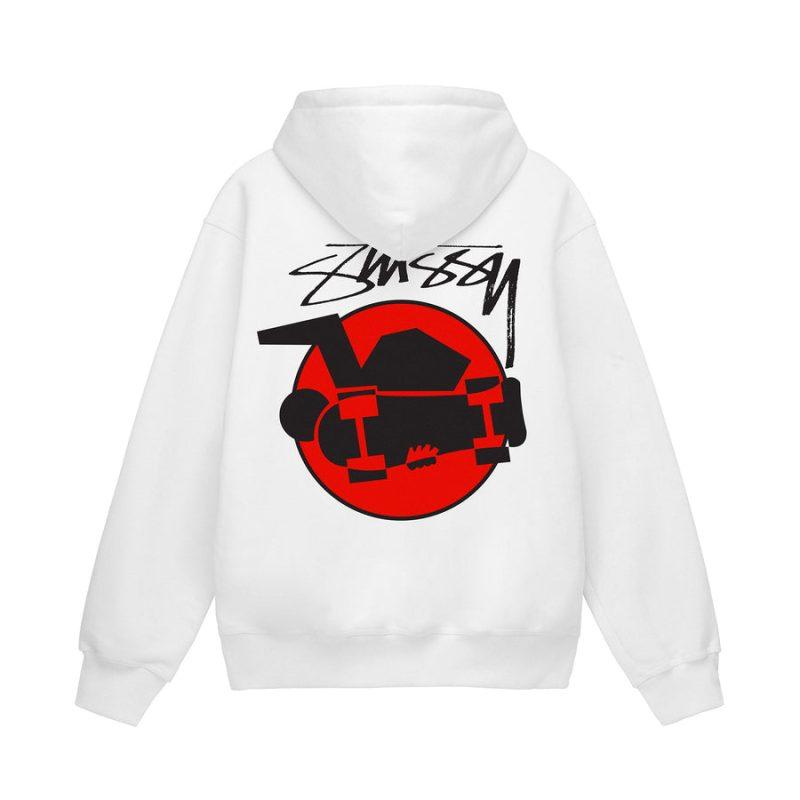The Evolution of Stussy: From Surfboards to Streetwear Royalty

The Birth of a Cultural Phenomenon
When we think of streetwear today, it’s hard not to include Stussy among the pioneers who shaped the entire movement. What started as a small surfboard business in the 1980s by Shawn Stussy in Laguna Beach, California, transformed into a global streetwear powerhouse. This brand is more than just clothing; it represents a lifestyle—a fusion of surf culture, skateboarding, music, and art, all stitched together with bold designs and an iconic logo that resonates with generations.
In a fashion landscape where trends come and go, Stüssy has managed to remain relevant for over four decades, standing as a bridge between subcultures and the mainstream. The journey of this brand is a tale of creativity, authenticity, and timeless appeal. Let’s dive deep into the legacy, influence, and enduring charm of Stüssy.
The Origins: A Surfboard Signature That Changed Everything
Before Stüssy became a household name in street fashion, it was simply Shawn Stussy’s signature on custom surfboards. Born in 1954, Shawn was a skilled surfer and board shaper who lived and breathed the surf lifestyle of Southern California. In the early 1980s, he began tagging his boards with a distinctive hand-drawn signature—a graffiti-inspired scrawl that would later become the iconic Stüssy logo.
The turning point came when Shawn applied that same signature to T-shirts, caps, and shorts. These were initially promotional items for his surfboard customers, but their bold, rebellious aesthetic quickly gained attention. People loved the raw, unpolished look of the logo and the laid-back attitude it represented. What started as a side hustle to promote surfboards became the foundation of an empire.
The Rise of a Global Streetwear Icon
The 1980s marked a cultural explosion—hip-hop was booming in New York, punk rock was thriving in London, and surf/skate culture dominated California. Stüssy brilliantly tapped into these overlapping subcultures, creating apparel that appealed to all. Shawn’s ability to mix influences from reggae, punk, hip-hop, and surf culture set Stüssy apart from traditional surf brands.
By the mid-1980s, Stüssy wasn’t just a surf label anymore; it was becoming a symbol of street cool. The brand’s distribution strategy was smart: it avoided mainstream department stores and focused on select boutiques that catered to youth culture. This exclusivity made Stüssy highly desirable. It wasn’t just clothing—it was a badge of belonging to an underground movement.
The Iconic Stüssy Logo: A Visual Identity That Defined a Generation
One of the most striking elements of Stüssy’s success is its logo. That handwritten scrawl, resembling graffiti art, carried an aura of authenticity and rebellion. Unlike polished corporate logos, Stüssy’s mark felt personal—raw, edgy, and cool. This design aesthetic became a template for future streetwear brands like Supreme and A Bathing Ape, which adopted similar strategies of strong visual identity and cultural relevance.
Stüssy also experimented with bold graphic prints, tribal-inspired motifs, and references to high fashion and pop culture. This fearless approach to design ensured that the brand stayed ahead of the curve, appealing to those who wanted something different from traditional fashion norms.
The International Stüssy Tribe: Building a Community, Not Just a Brand
Perhaps one of the most innovative moves in Stüssy’s history was the creation of the International Stüssy Tribe (IST) in the late 1980s. This was more than just a marketing tactic; it was a cultural movement. The IST was a network of DJs, skaters, artists, and influencers across the globe who represented the brand in their respective cities. Members of the Tribe would wear Stüssy, promote it in their scenes, and contribute to its cultural narrative.
Cities like Tokyo, London, New York, and Los Angeles became hotspots for Stüssy culture. The brand had tapped into something powerful—people didn’t just wear Stüssy; they identified with it. They became part of a community that valued creativity, individuality, and self-expression.
Collaborations: The Art of Staying Relevant
One of the key strategies that kept Stüssy ahead in the fashion game is its knack for collaborations. Long before collaborations became an industry standard, Stüssy was teaming up with like-minded brands and designers to create limited-edition collections. From Nike and Converse to Comme des Garçons and Supreme, Stüssy’s partnerships have always struck the right balance between exclusivity and creativity.
These collaborations didn’t just add freshness to the brand—they reinforced its image as a cultural innovator. Each drop became an event, eagerly anticipated by fans and collectors worldwide. In today’s hype-driven market, this collaborative spirit is one reason Stüssy continues to thrive among younger generations.
The Cultural Impact: Music, Art, and Beyond
Stussy Clothing influence extends far beyond fashion. The brand has deep roots in music culture—particularly hip-hop, reggae, and punk. Artists like A Tribe Called Quest, Beastie Boys, and other influential musicians were spotted wearing Stüssy gear during the 1990s. This association elevated the brand from a clothing label to a cultural symbol.
Art also plays a crucial role in Stüssy’s identity. The brand frequently incorporates artwork from contemporary designers and artists, keeping its collections visually striking and relevant. This fusion of music, art, and fashion created a multi-dimensional appeal that few brands can replicate.
The Streetwear Revolution: How Stüssy Paved the Way
Today, streetwear dominates global fashion, with luxury brands like Louis Vuitton and Dior embracing sneakers, hoodies, and graphic tees. But long before this mainstream acceptance, Stüssy was championing these elements. The brand blurred the lines between sportswear, casual wear, and high fashion, inspiring countless streetwear labels.
Stüssy’s formula was simple yet revolutionary: authenticity + exclusivity + creativity. By staying true to its roots while evolving with cultural trends, Stüssy showed that streetwear wasn’t just a fad—it was a movement. This approach laid the groundwork for modern streetwear giants and established a blueprint that many still follow today.
Modern-Day Stüssy: Staying Cool in a Saturated Market
The streetwear market in 2025 is crowded with brands competing for attention, yet Stüssy continues to hold its own. Its ability to stay relevant lies in its deep connection to culture, rather than chasing trends blindly. Stüssy drops remain highly anticipated, and its collaborations often sell out within minutes.
The brand has also embraced sustainability and conscious fashion in recent years, reflecting the values of its young consumer base. Limited runs, high-quality fabrics, and ethical sourcing have become part of the Stüssy ethos without compromising its identity.
The Legacy of Stüssy: Why It Still Matters
Why does Stüssy still command such respect after 40+ years? The answer lies in its authenticity. From its beginnings as a surfboard signature to becoming a global icon, Stüssy never lost sight of its creative spirit. It didn’t try to fit into the mold of traditional fashion—it broke it, reshaped it, and built an entire subculture around it.
Today, owning a Stüssy piece is more than a fashion choice—it’s a connection to a rich history of innovation, artistry, and counterculture. Whether it’s a classic logo tee or a limited-edition collaboration, Stüssy remains a timeless symbol of individuality and style.
The Future of Stüssy in Streetwear Culture
As we look ahead, Stussy Hoodie future appears brighter than ever. The brand continues to influence new generations, proving that true style never fades. It has mastered the art of reinvention without losing authenticity—a rare feat in the fast-paced world of fashion.
From surfboards in California to the runways of Paris and the streets of Tokyo, Stüssy’s journey is a testament to the power of creativity and cultural relevance. It’s not just clothing; it’s a lifestyle, a movement, and a legacy that will continue to shape streetwear for decades to come.


